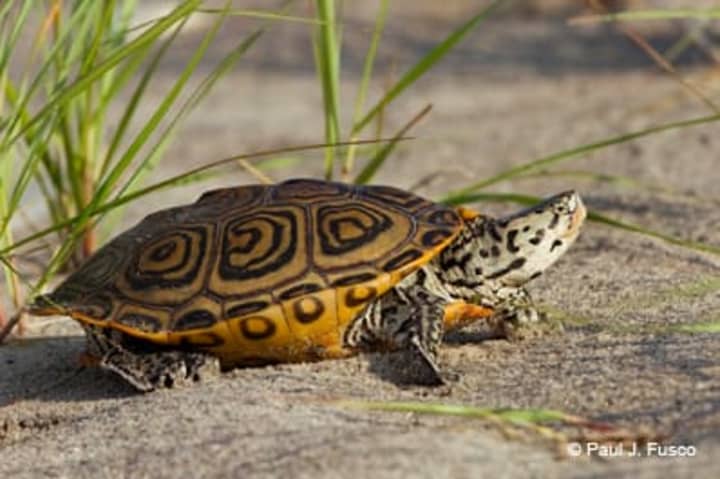The terrapin has been added to the list of species of special concern being assembled for 2015 by the wildlife division of the Connecticut Department of Energy and Environmental Protection. While the size of the colony on Hoyt is indeterminate, the number of sightings is characterized as numerous.
Where turtles area essentially fresh water or sea water inhabitants, terrapins live on land and water, typically brackish environments like the salt marshes and tidal estuary of Hoyt Island, one of the 27 Norwalk Islands, 500 yards offshore from the Village Creek neighborhood.
In the spring, the sandy beach at Village Creek also becomes an incubator for clutches of terrapin eggs. At birth the hatchlings are barely an inch long. Female grow to a foot in length, males half that size. They survive for between 25 and 40 years. The upper shell or carapace is distinguished by concentric grooves, the under shell or plastron, orange or brown in color. Even as populations rebounded, it has been illegal in Connecticut to collect them from the wild or keep them as pets.
Now, Kathy Herz, wildlife biologist with Connecticut DEEP, reports new regulations to be enacted this year classify the northern diamond terrapin as a species of concern, as opposed to endangered or threatened, two levels for wildlife facing more critical pressures. Her colleague Brian Hess, also a wildlife biologist, said preserving a remote wildlife habitation like Hoyt Island “really does matter.” “A densely populated urban state like Connecticut is a tough place for turtles to live,” he said. “They are threatened by development, climate change, vehicle traffic and the potential for viruses and disease. Keeping the island as a sanctuary is important to the survival of a number species that are imperiled. ”
Click here to follow Daily Voice Norwalk and receive free news updates.


